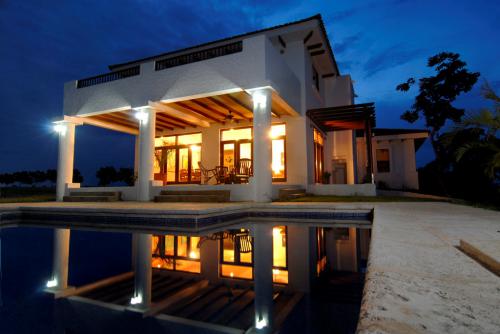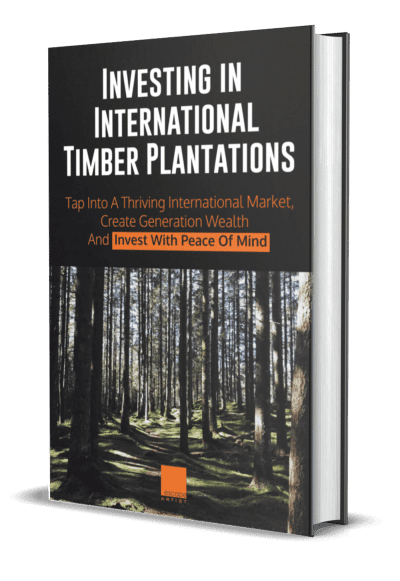Building overseas can be stressful. Heck, building in the U.S. or Canada can be stressful. They say a marriage that survives a house being built is a good one. So now compound the pressure by doing it a couple thousand miles away, possibly in a language you don’t speak, and throw in various cultural aspects and factors. Now you have a recipe for a pressure cooker, or with good information, a great fun-filled adventure.
Many people do build homes overseas, and you can too. It’s not for the faint-hearted for sure, but with the right attitude, patience, and perseverance, the results can be stunning. Remember, things that cost a fortune in North America, like handcrafted items, piece work, and details that take a lot of time, are some of the least expensive parts of the process overseas.Things that are cheap in the States may not be abroad. It’s a mixed bag, but with careful planning and foresight, you can build your dream home overseas.
Doing something right the first time is key. That takes proper planning. In a home, this means getting the design and engineering done by qualified professionals and individuals. In every country that I know of, you must have a local architect and engineer to get permits and certifications. You don’t have to rely 100% on them however, and you probably shouldn’t. A hybrid approach is usually best.
Here’s why.
In many cases, the local designers won’t have a good idea of what you like from a design standpoint. Case and point are kitchens in Latin America. Whereas most people in North America do their own cooking, the wealthy (of which you will be one by local standards) would have a maid in the kitchen doing all the cooking. Because of that, kitchens are walled off, small, and not particularly nice. My wife and I looked at 5 or 6 houses to rent before she found one with a nice enough kitchen, sufficient counter space, and convenient cabinets. The open/great room concept that includes the kitchen, dining, and living room, popular in North America, is a cultural misfit in Latin America. Many architects will simply find it hard to believe that you actually desire this and will draw it “their” way instead.
Also, if you plan to rent out your home, create an owner’s lock up. A large closet is fine, but if possible, make sure that you create a process for airflow so clothes don’t get moldy. Some people add a small dehumidifier and drain system to keep the air dry, but not necessarily cool. Depending on what you want to keep, plan accordingly.
You must take charge of the process. Bring ideas and floor plans with you if you plan to build a custom home. There are tons of related books on the market for homes of all sizes and types. Starting there and generating your adapted ideas is a winner. Remember too that a picture is worth 1000 words, especially with language barriers. The more pictures you have, the better. They will clarify items like a stair rail, banister, kitchen backsplash, or tile pattern far better than you can with words. Conveying your desired outcome as specifically as possible in pictures will be an extremely valuable tool in the process.
That said, local architects will have ideas that you would never think of coming from North America – like doors and portals that stay open to the outside 24 hours a day, 365 days per year. Sometime with no screens. “What! You’ve got to be kidding me,” you might say. I too was a skeptic, but my home in Managua for 10 plus years was like that. The “porton” to our laundry area was a non-screened, decorative, wrought-iron door that was open to the elements all the time. Our sliding glass doors were open from 5:30 am to 8:00 pm every day, no screens. Bugs were not an issue.
Another local element is taking advantage of the breezes and shading for porches. The amount of outdoor living space will likely be larger than we are familiar with or would design into a home in the U.S. Big shaded patios and garden areas will see a lot of use. Big indoor spaces will usually sit empty most of the time.
Another awareness that local architects will have is that electricity is expensive. Therefore, many people only have air conditioners in the bedrooms – almost no one installs central AC. Split units, a type of air conditioner popular in the region, allows you to put air only where you are going to need it, which is typically the bedroom. Remember also to add ceiling fans to your design. Moving air cools a room nicely, and having fans circulating air will cut back on the need for AC considerably.
Locating a home to take advantage of the natural airflow is also key. Having windows that let the breeze flow through a home, especially at night, will limit AC usage. But just as important is knowing if the breezes are too strong, in which plants or other structures could be added to slow the breeze down. A local architect should have a sense of this, and if they don’t, then you need to pay attention and make sure that you do.
Homes on the water need additional thought for construction materials and post construction maintenance. Concrete will offer the least maintenance for sun, wind, rain, and salty air, especially when painted with some of the high-tech paints. Wood requires a lot more work, with at least annual maintenance, but for the desired look, many people decide to use wood on balconies and porch posts anyway. Understanding up front what you’ll need to do on a regular basis to keep the home looking good and protected is an important element to consider.
Experience the Insider community that takes your international lifestyle to the next level. Download your FREE guide
"18 Steps to Implementing Your Plan B" instantly!
“Where are all the concrete houses?” my 12-year-old daughter asked me a few days ago while driving around the Shenandoah Valley. Funny what kids notice. Living in Nicaragua her whole life, 90% or more of the homes are concrete, either block and plastered or poured. It’s the building material of choice in the region. Be flexible and know that while it’s possible to build out of wood, steel, etc…. the local methodologies are time tested and selected for good reasons most of the time. There are always exceptions, though, so asking questions is a great idea. Wood will probably be eaten by termites unless it’s specialty wood, and expensive. Steel structures will work, but finding the materials and the craftsmen to build them will be a challenge. Since concrete is what is used everywhere, chances are it’s the best value, well-stocked, and there are a slew of artisans and workers familiar with how to build with it.
Once you’ve selected an architect and have the house designed, make sure that the engineering is right for the environment. Remember that the Pacific coast of Central and South America is part of the ring of fire, same as California and the west coast of North America. Seismic construction is required for structural integrity and safety. It is wise to have a second engineer look at the plans to make sure they comply with standards.
In the Caribbean, hurricanes are the real environmental factor to consider. Homes built to a Miami Dade rating of 4 or 5 are going to hold up well during a hurricane. Remember that your neighbor’s home may not have been built to code, and that flying debris from their property will be an issue. Windows rated at a 5 can withstand impacts of more than 150 mph. This upgrade may be a good investment.
Another thing to consider is the clay tile roofing typically used in the region. They are delightful, beautiful, handcrafted, and inexpensive. There are two specific downsides to the tile, however: bats and water. When installed correctly, though, neither should be an issue.
Bats are wonderful animals that eat a ton of bugs. We love bats. However, bats living inside your roof is not such a great thing. I know…I had them and we even had a special bat catcher for when they somehow made it into the house, usually into my teenage daughter’s bedroom. She was a trooper though and would come get the plastic colander and hard cardboard part of a yellow pad, trap the bat underneath, and then go outside to release it. The way to prevent bats in a clay roof is to seal the ends of the tiles where they hang open to the air at the end of the roof. It’s a simple fix, so make sure that your engineer/architect/contractor plans for it, quotes it, and builds it.
The handcrafted aspect of clay tiles, besides looking awesome, does have a downside. They absorb water…a lot of water. In North America, building codes require that a tile meet the ASTM standard. It defines the maximum absorption of water a tile can have to be used in construction. It has a lot to do with the type of clay and the time and temperature at which it is fired. This is part of every standard building code. On the other hand, handmade tiles from the farmer’s factory down the road don’t have to meet an ASTM standard and were likely fired by burning brush. This means they may or may not limit the amount of water absorption.
Why is this important? Water is heavy. Roof structures need to be designed to carry the wet weight of a tile, which can be double if soaked. In seismic zones, this means more steel, bigger steel, and stronger engineering. This is completely necessary and it costs extra money. Rebar size and concrete integrity (PSI) are integral to structural integrity.
A note about thatch – this construction methodology looks great, sexy even, and is enticing for the tropical feel it brings to a home. I agree. It does. But there are some critical downsides to thatch most contractors won’t tell you about. First, thatch is a 7-10-year roof, at best. Luckily it’s not that expensive to install, but it requires a quarterly spraying for bugs at a minimum, including wasps and scorpions. Thatch roofs also drop a lot of dust and plant debris, especially when it’s windy, so keeping the counters and floors clean will be a daily process. Not a big deal if you have a maid, but plan on it. Again, thatch is sexy…just understand the ongoing issues if you decide to use it.
There are many other items beyond the roof to consider as well. Wire and panel box sizing matter, especially for North Americans with numerous appliances, computers, TVs and toys. What is “standard” for a typical household electrical load in the region will be too little for most expats. We require heavy gauge wires and bigger panel boxes to carry a larger load. For plumbing, correct pipe specifications and proper connections are the key to long lasting systems. Hiring an engineer who understands these issues and the differences for a North American client is key. They won’t be the cheapest, but a penny paid at this stage is thousands of dollars saved down line.
After the home is designed, the next step is hiring the contractor. Generally, there is no licensing for contractors. They are a contractor if they say they are. Professional associations exist, and hiring a contractor who belongs to an association is a good idea. Just like in North America, the reputation of a builder is critically important. Be sure that you understand what type of projects, commercial or residential, and which building materials they favor. When possible, get references. Go and see prior homes they have built. Stay sharp and stay focused on the details. Look at the finished work up close. Examine the tile baseboards in the closets. See if the doors swing closed easily or hang up and rub. Check the wood and inspect for cracking.
FYI: Kiln-dried lumber is rare and expensive in the region. Either demand it and pay for it, or be okay with cracking.
In any case, get comfortable with your contractor. Your principal relationship for the next 12 months of construction will be with them. There is no bonding of contractors, so any warranty issues will be with the builder specifically. Any warranty provisions you’d like to have must be written into the contracts specifically. That said, this is probably a good place to segway into contracts and the legal system in the region.
Next week, we’ll pick up here and continue with the discussions of the legal system, how Civil Law differs from Common Law, and what that means to people familiar with Common Law used almost exclusively in North America. We’ll cover the areas of building a home, like the payment terms, hiring an inspector, what to consider if the home will be a rental property, and outfitting a home with furniture and appliances. Stay tuned and have a great week.
Next article in this series – Part 2
 Michael K. Cobb is the CEO and co-founder of ECI Developments which has properties throughout Latin America. He speaks all over the world on international real estate and is a board member of the National Association of Realtors.
Michael K. Cobb is the CEO and co-founder of ECI Developments which has properties throughout Latin America. He speaks all over the world on international real estate and is a board member of the National Association of Realtors.
Like Our Articles?
Then make sure to check out our Bookstore... we have titles packed full of premium offshore intel. Instant Download - Print off for your private library before the government demands we take these down!








